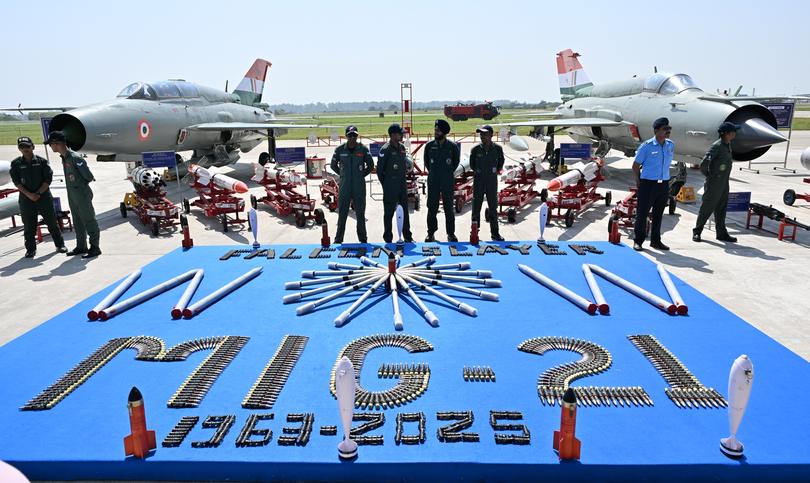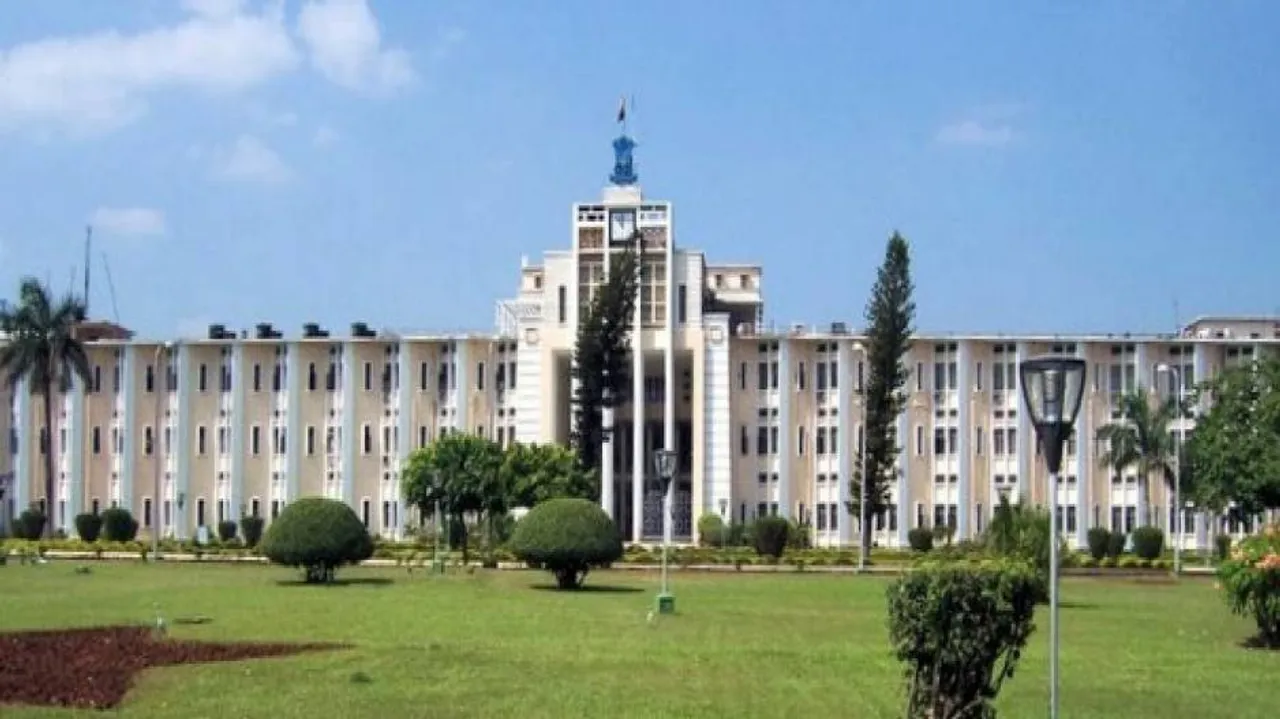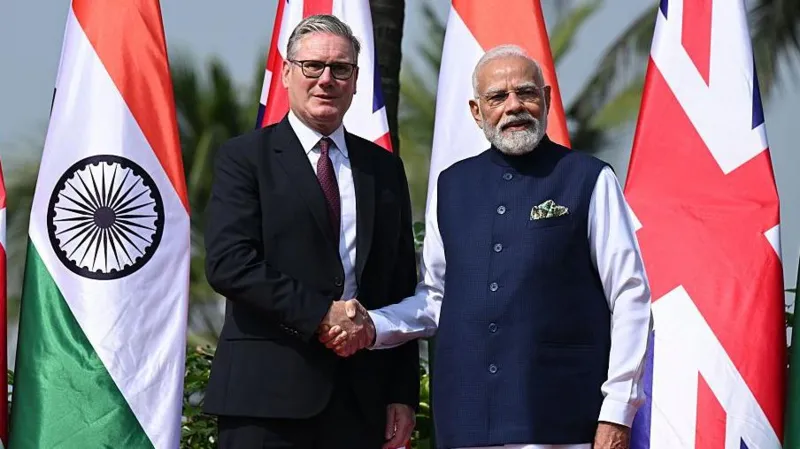The legendary Mikoyan-Gurevich MiG-21 fighter jets, the backbone of the Indian Air Force (IAF) for over six decades, roared across the skies for the final time on Friday, marking the end of an era in Indian military aviation. The farewell ceremony, held in Chandigarh where the aircraft was first inducted in the 1960s, was a fitting tribute to the warhorse that shaped India’s air power.
A Historic Farewell
Under a clear blue sky, the ceremony began with Defence Minister Rajnath Singh paying tribute to the aircraft’s unmatched legacy. Describing the MiG-21 as a “mighty machine and a national pride,” Singh emphasized the deep India-Russia ties that the jet symbolized.
“MiG-21 is not just a machine but a testimony to our military aviation journey. It gave us many proud moments and helped shape our confidence as a fighting force,” the minister said.
The ceremony featured the elite Akash Ganga skydiving team, who leapt from 8,000 feet, followed by a majestic flypast of MiG-21s in the three-aircraft Badal formation and the four-aircraft Panther formation, saluting the skies one last time. The jets also received a water cannon salute, a symbolic gesture marking their retirement.
Adding grandeur to the occasion, the Surya Kiran aerobatic team showcased breathtaking manoeuvres, while modern fighters like the Tejas and Jaguar joined the farewell display, underscoring the transition of India’s air fleet into a new era.
Distinguished Guests Witness Final Flight
The farewell was attended by a host of dignitaries, including former IAF chiefs A.Y. Tipnis, S.P. Tyagi, B.S. Dhanoa, and Group Captain Shubhanshu Shukla, India’s first man on the International Space Station.
Air Chief Marshal A.P. Singh, flying the MiG-21 Bison aircraft with call sign Badal 3, led the symbolic sortie. This moment linked history to the present, as Dilbagh Singh, who later became IAF Chief in 1981, had led the first MiG-21 squadron in 1963.
The Supersonic Legacy
India inducted its first MiG-21s in 1963, eventually procuring over 870 aircraft, making it one of the largest operators globally. For decades, the MiG-21 remained the country’s first supersonic fighter and interceptor, significantly enhancing IAF’s strike capability.
The aircraft etched its name in history during the 1965 and 1971 wars with Pakistan, where it proved its combat mettle. It also played pivotal roles in the 1999 Kargil conflict and the 2019 Balakot airstrikes, cementing its reputation as a reliable warhorse in critical missions.
However, the MiG-21’s service has been bittersweet. While celebrated for its combat performance, the aircraft developed a troubled safety record in later years, with frequent crashes leading some to label it the “flying coffin”. Despite this, it continued to serve as a frontline fighter until modern replacements were ready.
Transition to the Future
The final operational flights of the MiG-21 took place last month at the Nal Air Force Station in Rajasthan’s Bikaner, a precursor to Friday’s formal retirement. On August 18-19, Air Chief Marshal Singh himself flew solo sorties of the MiG-21 from Nal, honouring its legacy before the curtain fell.
The IAF is now transitioning to indigenous platforms like the Tejas Light Combat Aircraft and preparing for the induction of advanced Rafale jets and future AMCA (Advanced Medium Combat Aircraft), marking a new chapter in India’s quest for air superiority.
Closing a Chapter in Air Power
The decommissioning of the MiG-21 marks the closure of a glorious yet challenging era for the IAF. From being India’s first supersonic fighter to shaping victories in wars, the MiG-21’s journey is etched in golden letters in the nation’s defence history.
As the last MiG-21s disappeared into the horizon, the event was more than a farewell—it was a salute to a machine that carried the aspirations, pride, and courage of generations of Indian air warriors.










